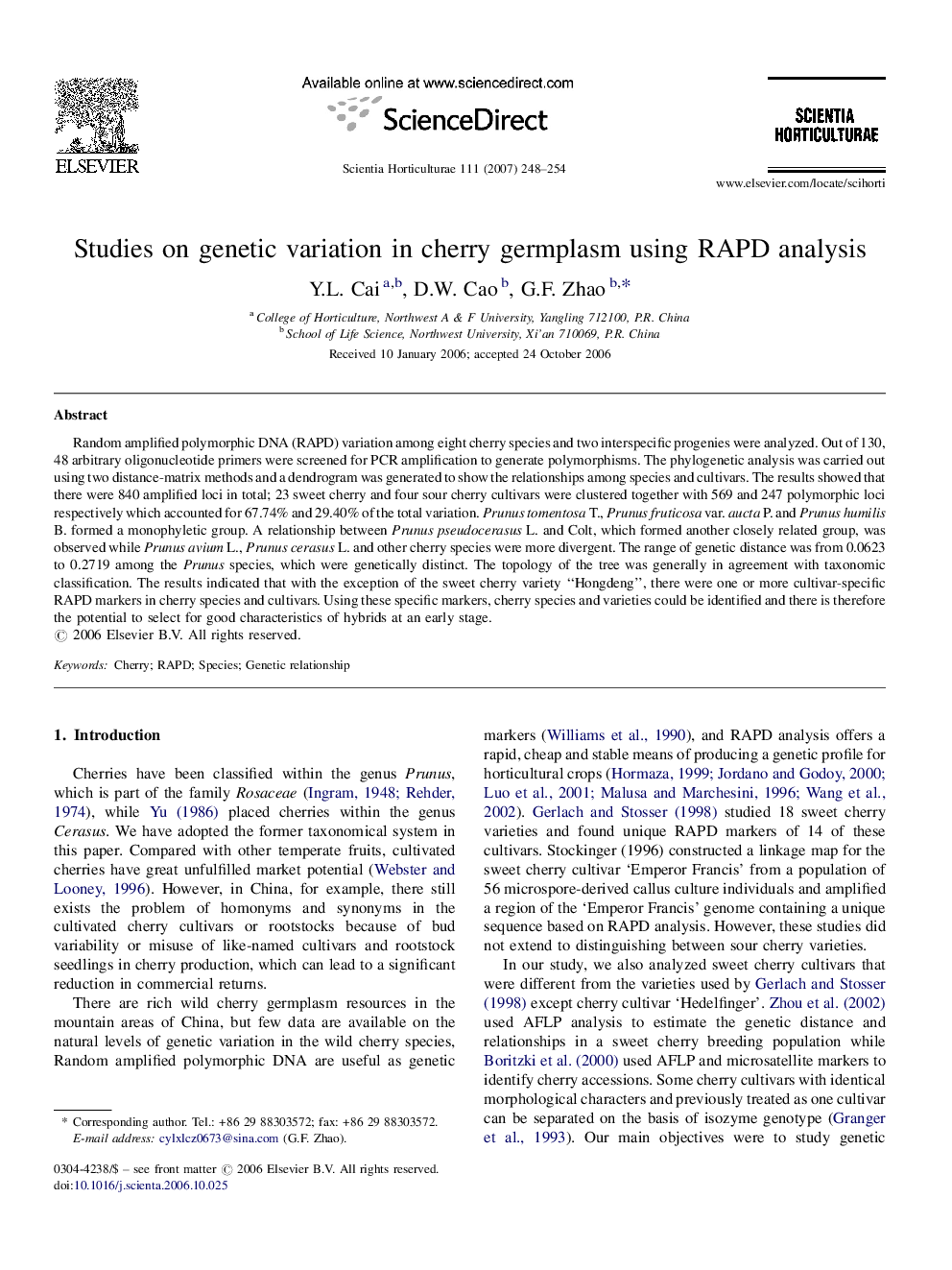| Article ID | Journal | Published Year | Pages | File Type |
|---|---|---|---|---|
| 4569725 | Scientia Horticulturae | 2007 | 7 Pages |
Abstract
Random amplified polymorphic DNA (RAPD) variation among eight cherry species and two interspecific progenies were analyzed. Out of 130, 48 arbitrary oligonucleotide primers were screened for PCR amplification to generate polymorphisms. The phylogenetic analysis was carried out using two distance-matrix methods and a dendrogram was generated to show the relationships among species and cultivars. The results showed that there were 840 amplified loci in total; 23 sweet cherry and four sour cherry cultivars were clustered together with 569 and 247 polymorphic loci respectively which accounted for 67.74% and 29.40% of the total variation. Prunus tomentosa T., Prunus fruticosa var. aucta P. and Prunus humilis B. formed a monophyletic group. A relationship between Prunus pseudocerasus L. and Colt, which formed another closely related group, was observed while Prunus avium L., Prunus cerasus L. and other cherry species were more divergent. The range of genetic distance was from 0.0623 to 0.2719 among the Prunus species, which were genetically distinct. The topology of the tree was generally in agreement with taxonomic classification. The results indicated that with the exception of the sweet cherry variety “Hongdeng”, there were one or more cultivar-specific RAPD markers in cherry species and cultivars. Using these specific markers, cherry species and varieties could be identified and there is therefore the potential to select for good characteristics of hybrids at an early stage.
Related Topics
Life Sciences
Agricultural and Biological Sciences
Horticulture
Authors
Y.L. Cai, D.W. Cao, G.F. Zhao,
